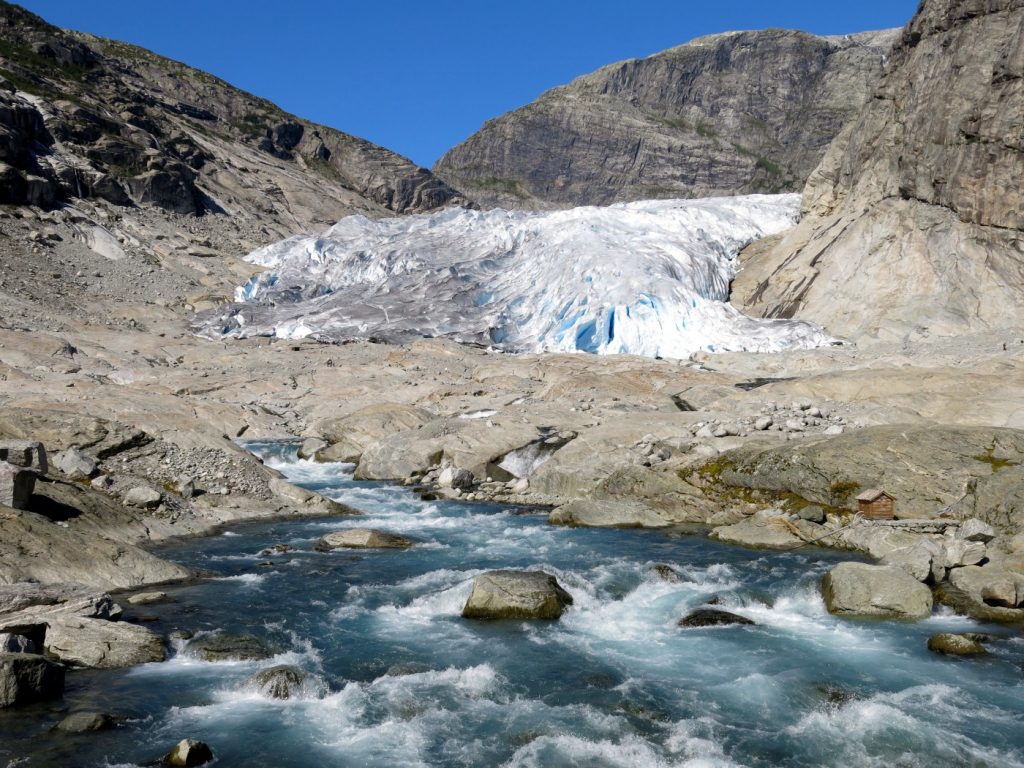We’ve all heard about the impact global warming is having on our planet and we see astonishing statistics reported in the news each day. We also hear about how our everyday lives place more and more stress on the environment. As I reflected upon this during Earth Day, it made me wonder what we might possibly do to make the world a better place for future generations.

Earlier this month, the National Academy of Sciences published new findings that Greenland’s glaciers dumped about 286 billion tons of water over the past eight years, up from 51 billion tons in the preceding ten years! There’s no denying earth is warming fastest in the Arctic, resulting in melting glaciers and rising sea-levels, and it’s caused by human activity. New climate data collected by NASA, NOAA and others tell a frightening story: The last five years were the hottest on record and researchers believe that this new information suggests we have actually been underestimating how quickly the effects of climate change are impacting our world.
It’s clear that the human activity is a prime cause of global climate change. Records show that prior to the Industrial Revolution, the climate system varied naturally as a result of changes in solar energy or volcanic eruptions. Our activities, from logging and clearing land to burning fossil fuels is largely to blame, but so is our use of technology. As engineers and scientists, we often think about our role in improving the quality of life for people, and we have. There are an extraordinary number of examples — everything from modern transportation, clean water, global communications, vaccine development and advanced medical instrumentation. We’ve had a tremendous impact on so many lives, but there have been disadvantages to all of this, and they are growing. According the Center for Strategic & International Studies, today’s global energy demand is nearly 60 percent greater than it was in 1990! Unfortunately, this rapid growth in energy demand and supply, has resulted in about the same percentage increase of global CO2 emissions. Clearly, this type of impact to our planet is not sustainable. However, there is some good news: in that same timeframe, we’ve made significant progress in other areas and inarguably heightened awareness of the rapidly accelerating climate crisis.

According to a recent report from KPMG, 93 percent of the world’s 250 largest companies (in terms of revenue) are now reporting on their efforts to increase sustainability and decrease their impact on the environment. For example, international hotel chains like Marriott and InterContinental have banned plastic straws from all hotels, while United Airlines became the first U.S. air carrier to publicly commit to reducing its own greenhouse emissions 50 percent by 2050. This is equivalent to removing 4.5 million vehicles from the road each year, or the total number of cars in Los Angeles and New York City combined! These commitments to environmental sustainability are critical in moving our conversations, and actions, in the right direction. Environmental awareness is also spreading among younger generations. Just last month, over a million students from 123 countries around the world staged one of the largest environmental protests in history, skipping a day of school to demand stronger climate policies from their governments. And right now, activists are blocking major roads, bridges and city landmarks in London, demanding the UK commit to zero net emissions by 2025. There is no doubt that their sense of urgency is warranted.
The youth of today are taking climate change more seriously than previous generations and this is one of the many things that give me hope. Though the popularity of power hungry technology may be to blame for our increased use of energy, there are ways in which technology can help us remedy the situation too. From carbon capture to wind farms, biofuels and solar panels, we now have a range of technologies to reduce greenhouse gas emissions. But it’s still not enough.
As the global accreditor of postsecondary programs in applied and natural science, computing, engineering and engineering technology, we have an obligation to ensure that today’s students develop solutions that will make life on our planet safer, more sustainable and more comfortable for us all. A high quality STEM education is a vital part of preparing students to address climate change and the many other sustainability issues facing us all. In honor of Earth Day, let’s make a greater effort to work collectively to build a more sustainable world.